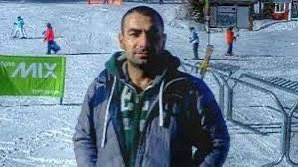With the likelihood of a ceasefire in Ukraine growing increasingly distant for the time being, the fighting on the ground continues without respite.
The Russian military maintains the strategic initiative but is not making the progress the Kremlin would have liked. On the other side, the Ukrainian military relinquishes ground where it must—and holds the line where it needs to.
A Russian Combat Tour of Ukraine
Fighting in Ukraine continues on a large-scale level in the east and southeast. The situation in the south is relatively stable.
“Adjacent to Russia’s Kursk and Belgorod oblasts, Russian forces have conducted large-scale aerial attacks on the Ukrainian oblast of Sumy. Russia highly likely intends to continue offensive activity in the region in order to reclaim the contested Kursk territory,” the British Ministry of Defence assessed in its latest intelligence estimate of the Ukrainian conflict.
Kyiv has maintained a salient inside Russian territory in Kursk since August. Despite dedicating tens of thousands of troops, including approximately 15,000 North Korean soldiers, Moscow has failed to expel the Ukrainians—although they made significant advances in March, including recapturing the town of Sudzha.
In addition, the Russian forces have been concentrating much of their combat power in the Donbas region of eastern Ukraine.
“In central Donetsk oblast, Russia contests several key urban strongholds such as Toretsk and Chasiv Yar,” the British Ministry of Defence added.
The Russian forces have been trying to capture the Ukrainian urban strongholds for several months now, but without much success.
“In southern Ukraine there have been few instances of Russian advances, however it is highly likely that Russia has prioritised other axes [of advance],” the British Ministry of Defence added, referencing the low level of fighting across the Dnieper River around the city of Kherson.
Russia’s Redoubt in Southern Ukraine
The Russian military has turned much of occupied southern Ukraine into a huge fortification. During 2023, when the Ukrainians had the strategic initiative and were preparing a large-scale counteroffensive, the Russian forces constructed the most comprehensive defensive works seen in Europe since the end of World War II. The defensive works, particularly in Ukraine’s south, were highly effective: Kyiv’s counteroffensive came to a stop, the Ukrainian mechanized brigades were unable to punch through the Russian lines and achieve a rout.
Russia’s very strong defensive position in southern Ukraine allows it to play defense in that sector of the contact line and dedicate its forces to other, more active sectors. It was from this southern sector that the Russian military leadership has been mainly drawing forces to bolster its numbers in the Kursk Oblast and combat the Ukrainian salient there.
In the east, the Russian forces have been trying to capture the key urban point of Kupiansk. Were the town to fall into Russian hands, Ukrainian defensive and offensive operations in the region would suffer.
“In Kharkiv oblast, Russia has persisted in making assaults towards the rail and logistics hub of Kupiansk. To the north of Kupiansk, Russian forces have maintained a bridgehead at the village of Zapadne, west of the Oskil river. Ukrainian Uncrewed Aerial Systems (UAS) and artillery strikes are reportedly hindering attempted Russian pontoon crossings,” the British Ministry of Defence concluded in its intelligence estimate.
Against the backdrop of all of the fighting across the contact line, combatants are taking losses. The Russian forces are suffering very heavy casualties, but has been able to regularly replenish these through new recruitment within Russia. Meanwhile, although the Ukrainian military’s losses are usually regarded as somewhat lower, its own manpower challenges are far more acute.
About the Author: Stavros Atlamazoglou
Stavros Atlamazoglou is a seasoned defense journalist specializing in special operations and a Hellenic Army veteran (national service with the 575th Marine Battalion and Army HQ). He holds a BA from the Johns Hopkins University and an MA from the Johns Hopkins’ School of Advanced International Studies (SAIS). His work has been featured in Business Insider, Sandboxx, and SOFREP.
Image: Shutterstock / Jose HERNANDEZ Camera 51.















